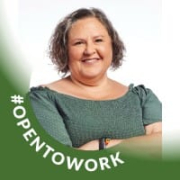Drata is a powerful tool for automating compliance processes, effectively reducing audit preparation time and continuously monitoring security controls. It is highly valued for its ability to integrate seamlessly with existing tech stacks and manage security for remote teams, ensuring adherence to standards like SOC 2 and HIPAA. Drata enhances organizational efficiency, improves workflows, and supports real-time compliance monitoring, making compliance management less stressful and more accurate.



| Product | Market Share (%) |
|---|---|
| Drata | 7.0% |
| Wiz | 26.9% |
| Microsoft Defender for Cloud | 17.4% |
| Other | 48.7% |
| Title | Rating | Mindshare | Recommending | |
|---|---|---|---|---|
| Wiz | 4.5 | 26.9% | 95% | 24 interviewsAdd to research |
| Microsoft Defender for Cloud | 4.0 | 17.4% | 94% | 79 interviewsAdd to research |
Users reported significant benefits from using Drata, noting particularly that it streamlined their compliance processes and significantly reduced the time and resources needed for audit preparations. This efficiency translated into substantial cost savings and enhanced team productivity, which users felt positively impacted their ROI. They appreciated Drata’s automation capabilities for continuous compliance monitoring, which further minimized manual workloads and allowed them to allocate resources to other critical areas of development.
| Company Size | Count |
|---|---|
| Small Business | 5 |
| Large Enterprise | 2 |
| Company Size | Count |
|---|---|
| Small Business | 123 |
| Midsize Enterprise | 41 |
| Large Enterprise | 138 |
| Author info | Rating | Review Summary |
|---|---|---|
| Chief Information Security Officer at Northstar Security Consulting | 4.5 | I transitioned from spreadsheets to Drata for SOC2 compliance, appreciating its seamless integrations and automated control management. While it improved efficiency, readiness metrics can seem inaccurate. Despite this, Drata's trust enablement offers significant organizational value and cost-effectiveness. |
| Chief Technology Officer at Revyse | 0.5 | I used Drata to manage our SOC 2 compliance, but the platform was confusing, inflexible, and time-consuming, with misleading UI and poor guidance, ultimately making the compliance process more difficult and extending it by several months. |
| SecOps Engineer III at FINIX PAYMENTS, INC | 5.0 | We use Drata as our GRC tool for audits like PCI and SOC 2 Type 2, benefiting from seamless integrations and improved security posture management. However, some new features need refinement, and the premium enhancements require careful consideration regarding costs and practicality. |
| Independent consultant at Independent | 4.0 | I deploy services for compliance with standards like HIPAA and ISO 27001. Drata provides robust APIs and automation features, though it can be costly and complex compared to cheaper alternatives like ServiceNow. The support is excellent and responsive. |
| Founder at Viridis Security | 4.0 | I use Drata for compliance and audit processes, finding it valuable for simplifying evidence gathering and task management. However, better marketing is needed as it's often marketed incorrectly as a replacement for security experts. |
| Cyber Security Engineer at Rather Labs | 4.0 | I use Drata in my company for SOC 2 certification and AWS control tracking. I'd appreciate more granular configurations and better API documentation. Overall, the product serves its purpose, but there's room for improvement in specific functionality areas. |
| Cloud and DevOps Engineer at Betaque | 4.5 | I used Drata for a project requiring SOC 2 compliance, finding it effective in identifying and addressing security loopholes. While it seamlessly integrates with cloud services and provides valuable guidance, it suffers from latency issues and is quite costly. |
| Auditor at a tech vendor with 51-200 employees | 4.0 | I use Drata to obtain SOC 2 and ISO 27001 compliance. While helpful, improvements are needed, including comprehensive module access and bug fixes. I've tried other vendors, finding price and service balance crucial when choosing a compliance platform. |